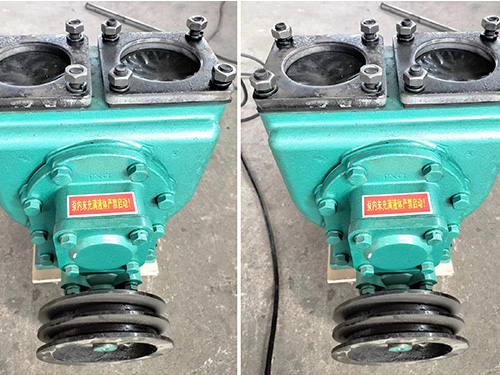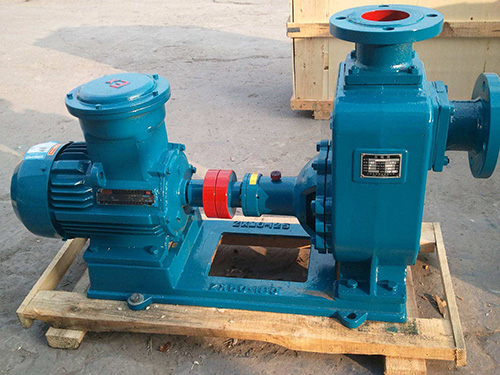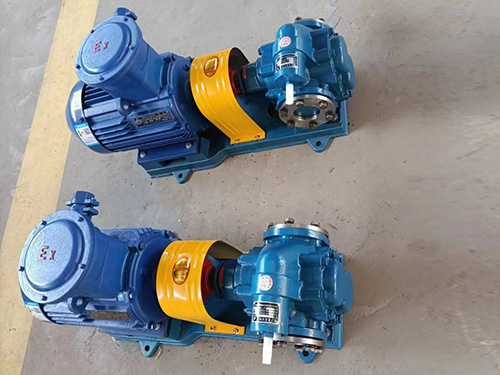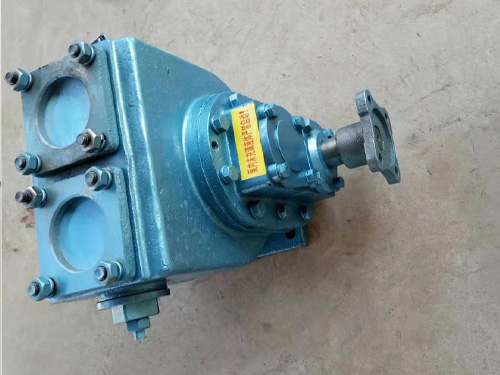Short term operation fault handling and correct usage method of self suction centrifugal pump
2023-10-20 00:14:21
{1} Short term operation fault handling of self suction centrifugal oil pump
When the self suction centrifugal oil pump is started, it deteriorates in a short period of time, and the production operating parameters are abnormal, unable to reach the normal production state. It is necessary to determine the phenomenon of the malfunction and analyze the cause of the malfunction in order to take corresponding measures to solve the problem and restore the normal operation of the self suction centrifugal oil pump
If air enters the pump, it is necessary to vent the gas inside the pump to prevent the pressure of the gas from hindering the normal suction and discharge of the liquid. Solve the problem of airbags entering the pump in the suction pipeline, and reasonably solve the problem of adverse effects of gas on the operation of self suction centrifugal pumps The wider the application scope of self suction centrifugal oil pump equipment, the more possible causes of faults may occur. However, according to survey data, the vast majority of faults are related to the level of operating technology, equipment installation, regular maintenance, the quality and importance of operators. From this, it can be seen that by paying sufficient attention and conducting regular equipment maintenance, the frequency of self suction centrifugal oil pump failures can be reduced, and it also demonstrates the importance of human intervention and prevention{2}. Correct usage of self suction centrifugal pumps
1. Preparation and inspection before starting
1. For this series of self suction centrifugal pumps, calcium based butter and No. 10 engine oil are used for lubrication according to the pump's operating condition. If butter lubrication is used, butter should be regularly added to the bearing box. For pumps lubricated with engine oil, if the oil level is insufficient, it should be added.
2. Check if the liquid storage inside the pump casing is higher than the upper edge of the impeller. If it is insufficient, the liquid can be directly injected into the pump body from the liquid filling port on the pump casing. It should not be started when the liquid storage is insufficient, otherwise it cannot work normally and may damage the mechanical seal 3. Check whether the rotating parts of the pump are stuck or bumped 4. Check for any looseness in the pump body feet and nuts at various connections 5. Check the coaxiality and parallelism between the pump shaft and the motor spindle 6. Check if there is any air leakage in the inlet pipeline. If there is any air leakage, try to eliminate it 7. Open the valve of the suction pipeline and slightly (not fully) open the outlet control valve2. Starting and Operation
1. Jog and pay attention to whether the rotation of the pump shaft is correct.
2. Pay attention to any abnormal sounds and vibrations during rotation 3. Pay attention to the readings on the pressure gauge and vacuum gauge. After starting, when the readings on the pressure gauge and vacuum gauge fluctuate for a period of time and become stable, it indicates that the pump has been filled with liquid and normal infusion operations have begun 4. Before the pump enters the normal infusion operation and during the self suction process, special attention should be paid to the increase in water temperature inside the pump. If this process is too long and the water temperature inside the pump is too high, the pump should be stopped to check the cause If the liquid temperature inside the pump is too high and causes difficulty in self suction, it can be temporarily stopped. The liquid in the discharge pipeline can be used to reflux back into the pump or directly replenish the liquid into the pump at the storage port on the pump body to cool down the liquid inside the pump, and then start 6. If strong vibration and noise occur during the operation of the pump, it may be caused by cavitation. There are two reasons for cavitation: one is the excessive flow rate in the inlet pipe, and the other is the high suction head. When the flow rate is too high, the outlet control valve can be adjusted to increase the pressure gauge reading. If there is a blockage in the inlet pipeline, it should be promptly eliminated; When the suction head is too high, the installation height of the pump can be appropriately reduced 7. When the pump stops due to unforeseen circumstances during operation and needs to be restarted, the outlet control valve should be slightly opened (not fully closed), which is beneficial for the gas to be discharged from the outlet during the self suction process and ensures that the tip can be started under lighter pressure 8. Pay attention to checking the pipeline system for any leakage3. Stop the pump
1. Close the gate valve on the discharge pipeline first.
2. Stop the pump from rotating In cold seasons, the storage fluid in the slurry pump body and the water in the cooling chamber of the bearing body should be emptied to prevent freezing and cracking of the components
The YHCB high flow pump has the characteristics of large flow rate, high head, small settli...

The CYZ centrifugal pump adopts an axial return liquid pump body structure, which is compos...

Copper gear pump (KCB type) is suitable for conveying lubricating oil or other liquids with...

The car mounted circular arc gear pump can be installed on the car and driven by the output...



